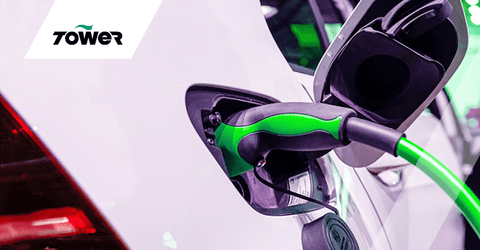
“I have many reasons to be interested! Firstly, I’m responsible for a team at Tower who manage our supply contracts with the AA and RAC, two of the biggest names in vehicle recovery and roadside maintenance. Secondly, it’s Tower’s mission to ‘make the workplace a better place’ by providing ‘intelligent solutions that protect people’.
“I also believe in the core Tower values of innovation and respect. ‘Innovation’ helps our customers progress, whilst ‘respect’ is our duty to care and protect. With more electric and hybrid vehicles around, it’s important I engage with buyers and wearers of PPE to help them understand their risk assessment. I also work with PPE manufacturers, to develop products that mitigate electric hazards.
“Lastly on a personal note, I drive an EV myself. That means I have a vested interest in the welfare of the EV services that I might require in the future!”

We've been busy behind the scenes working with leading professionals in the EV sector to build our complete EV safety series, and the next instalment will be released VERY soon!
“I can tell you right now that although many companies with employees dealing with EVs have assessed the risks, there’s currently no clear consensus in terms of what PPE people should be using. In terms of training and experience, I can also tell you that current Tower PPE wearers who deal with EVs are technicians who diagnose faults and carry out repairs. And they are qualified to a minimum of Level 3 in Vehicle Repair and Maintenance.
“I want companies to remember that according to the hierarchy of controls, PPE is the last line of defence. Before PPE is used, companies should be looking to control risk at an administrative level (such as changing working methods and engineering controls), isolating people from the hazard where possible, substituting or replacing the hazard, and looking to eliminate it altogether.
“If we look at safety footwear in particular, some styles conform to an ASTM (American Society for Testing and Materials) standard. This is specifically for ASTM F2413 (Specification for Performance Requirements for Protective (Safety) Toe Cap Footwear) and the electrical hazard (EH) test.
“This test is for EH protective footwear and is designed to reduce the hazards due to accidental contact with live electrical circuits. It’s only meant to be used as a secondary protection for electrical hazard environments.
“On such footwear, the outer surface of the sole and heel shouldn’t be penetrated by any electrically conductive component, like nails in the heel. EH shock-resistant footwear must be capable of withstanding the application of 18,000 volts at 60 Hz for 1 minute, with no current flow or leakage of more than 1.0 milliampere.
“There’s a British Standard for dielectric wellies called EN 50321. This is a test for PPE used as electrical insulating footwear that protects against electric shock when working live or close to live parts up to 36,000V AC or 25,000V DC.”
“Regulation (EU) 2016/425 (as incorporated into UK law) sets out the essential health and safety requirements that must be met before PPE products can be placed on the GB market.
“The Personal Protective Equipment (Enforcement) Regulations 2018 then provide a system for the enforcement of the 2016 Regulation. Unfortunately, the ASTM test is not officially recognised in the UK. It’s currently not a designated standard in the PPE regulations.”
“The British Safety Industry Federation (BSiF) have a Safety Footwear Special Interest Group of which I’m a member. They also have a Test and Certification Group who have reviewed the American test for electrical shock resistance, to propose a UK equivalent. I think this is of urgent importance as safety footwear is Category II PPE, which means it protects against risks that can result in permanent adverse health effects.
“The PPE regulations state that products that protect against potentially deadly hazards or serious and irreversible injuries to health (such as EH footwear) should be Category III PPE. This has a more onerous and continuous process to demonstrate and maintain the quality of manufacturing.”
“The BSiF invite end user organisations of EH footwear with relevant field experience to help develop a robust and relevant standard. I’m here to facilitate this with anyone that wants to help, so please contact me.
Introduction to EV
We've been busy behind the scenes working with leading professionals in the EV sector to build our complete EV safety series. Bursting with industry news, eye-opening interviews, safety advice and FREE infographics, the next instalment will be released VERY soon!
To be notified as soon as we release it, please fill in the contact form below...